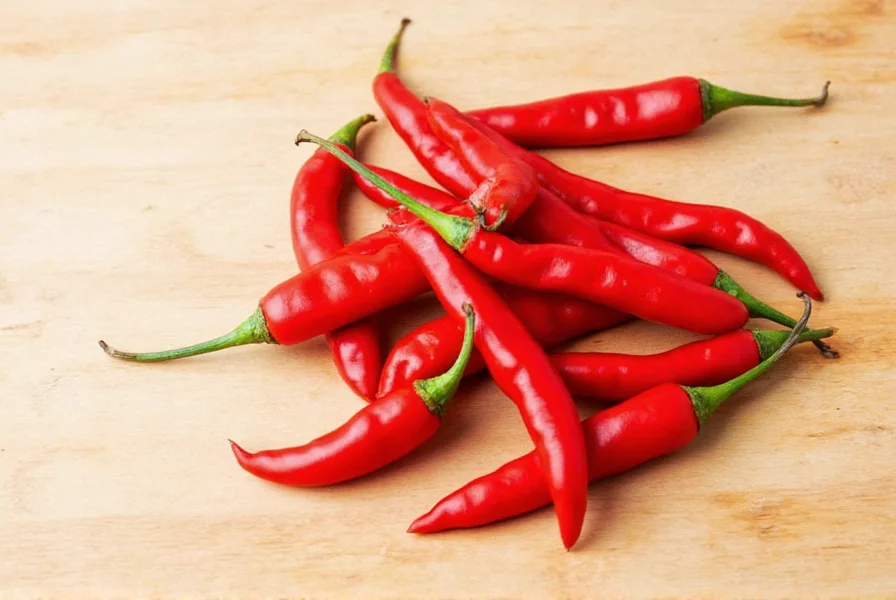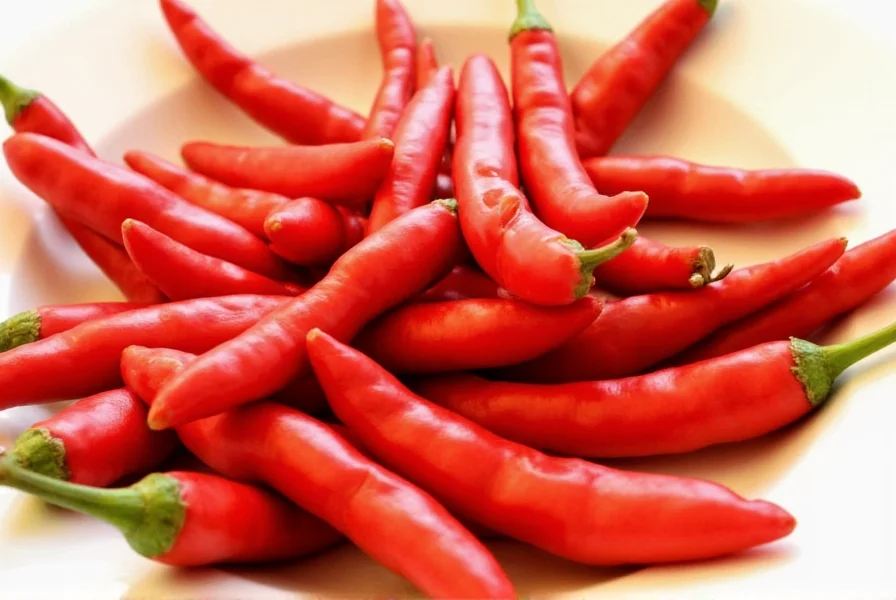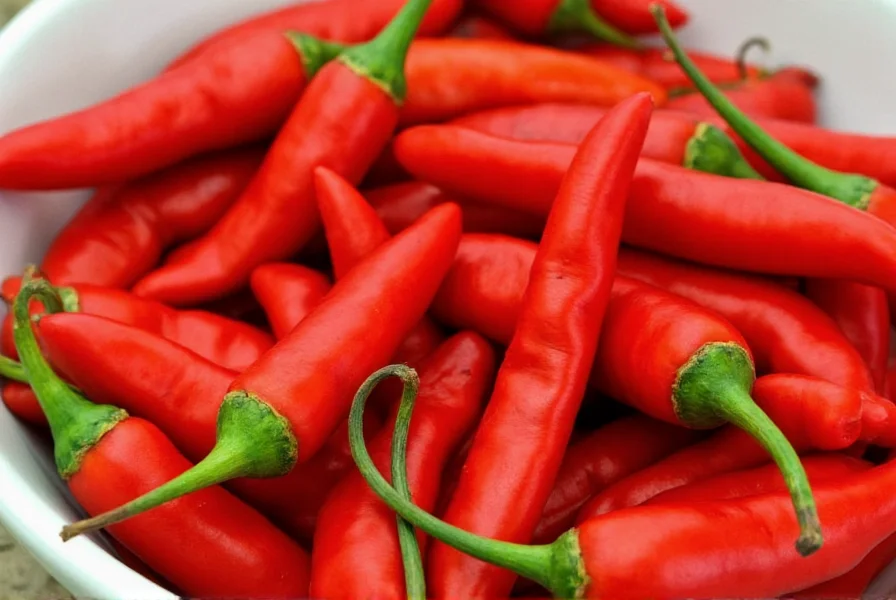When exploring the world of spicy condiments, few ingredients have shaped hot sauce traditions as profoundly as cayenne pepper. This slender red chili has become synonymous with approachable heat in kitchens worldwide. Understanding its unique properties helps both home cooks and professional chefs harness its full potential in sauce creation.
The Botanical Profile of Cayenne Pepper
Cayenne pepper (Capsicum annuum) belongs to the same species as bell peppers and jalapeños but expresses significantly more heat. Originating in French Guiana, this pepper spread globally through trade routes, becoming a staple in cuisines from Louisiana to West Africa. Mature cayenne peppers measure 2-5 inches long with thin walls, turning from green to vibrant red when fully ripe.
Heat Measurement and Flavor Characteristics
Understanding cayenne's position on the Scoville scale explains its popularity in hot sauce formulation. While habaneros and ghost peppers dominate extreme heat categories, cayenne occupies the sweet spot of noticeable but manageable spiciness.
| Pepper Variety | Scoville Heat Units | Flavor Profile | Common Hot Sauce Applications |
|---|---|---|---|
| Cayenne | 30,000-50,000 SHU | Bright, slightly fruity, earthy | Everyday hot sauces, Louisiana-style sauces, finishing sauces |
| Jalapeño | 2,500-8,000 SHU | Grassy, vegetal | Salsa, milder hot sauces, pickled applications |
| Habanero | 100,000-350,000 SHU | Tropical fruit, floral | Caribbean-style sauces, fruit-infused hot sauces |
| Ghost Pepper | 800,000-1,000,000 SHU | Smoky, sweet initially | Extreme heat sauces, limited edition products |
What makes cayenne particularly valuable for hot sauce makers is its flavor complexity beyond mere heat. Unlike some hotter varieties that primarily deliver burn, cayenne contributes a bright, slightly fruity note with earthy undertones. This dimensional profile allows it to enhance rather than dominate dishes—a critical consideration when crafting balanced hot sauces.

Historical Significance in Hot Sauce Development
Cayenne's journey into hot sauce history began with African and Indigenous American culinary traditions. Enslaved Africans brought pepper cultivation knowledge to the Americas, where cayenne became integral to regional cuisines. By the late 19th century, cayenne-based sauces emerged commercially, with Louisiana's red pepper sauces establishing the template for modern hot sauce production.
The 1920s saw the birth of many iconic cayenne-based sauces, particularly vinegar-forward formulations that preserved the pepper's bright heat while creating shelf-stable products. These traditional methods remain influential in contemporary hot sauce production, demonstrating cayenne's enduring appeal.
Practical Applications in Sauce Creation
When developing hot sauces with cayenne pepper, several factors influence the final product's character:
- Fresh vs. dried peppers: Dried cayenne intensifies heat and develops smokier notes, while fresh peppers yield brighter, more vegetal flavors
- Vinegar selection: Distilled white vinegar creates sharp contrast, while apple cider vinegar adds fruitiness that complements cayenne's natural notes
- Fermentation duration: Shorter ferments (2-4 weeks) preserve cayenne's bright heat, while extended ferments develop more complex flavor profiles
- Additional ingredients: Garlic enhances earthiness, while citrus balances heat with acidity
For home sauce makers exploring cayenne pepper hot sauce recipe options, a basic formulation might include 1 cup dried cayenne peppers, 2 cups vinegar, 2 garlic cloves, and 1 teaspoon salt. Simmering ingredients for 15 minutes before blending creates a smooth, consistent texture ideal for bottling.
Nutritional and Functional Properties
Beyond its culinary applications, cayenne pepper contributes several functional benefits to hot sauces. Capsaicin, the compound responsible for heat, has demonstrated metabolic effects in scientific studies. While health benefits of cayenne pepper hot sauce shouldn't be overstated, moderate consumption may support digestion and provide temporary metabolic boosts.
The natural preservative qualities of capsaicin also extend hot sauce shelf life, reducing spoilage risks in homemade formulations. When properly processed with adequate acidity, cayenne-based sauces maintain safety and flavor for extended periods.

Comparative Analysis: Cayenne vs. Alternative Peppers
Understanding how cayenne compares to other popular hot sauce ingredients helps in recipe development. The cayenne pepper vs habanero hot sauce distinction represents a fundamental choice between balanced heat and intense fruitiness.
While habaneros deliver tropical fruit notes at much higher heat levels, cayenne provides more consistent, predictable heat that works across diverse culinary applications. For those seeking how hot is cayenne pepper in hot sauce context, it typically registers as noticeably spicy but remains manageable for most palates—unlike ghost peppers or Carolina reapers that require careful handling.
Optimizing Cayenne Selection for Sauce Production
Not all cayenne peppers perform equally in hot sauce applications. When sourcing peppers, consider these factors:
- Maturity level: Fully red peppers provide maximum heat and developed flavor
- Origin: Peppers from different regions express varying heat levels and flavor notes
- Drying method: Sun-dried peppers develop more complex flavors than oven-dried
- Storage conditions: Properly stored dried peppers maintain potency for 1-2 years
For those exploring making hot sauce with dried cayenne peppers, rehydration techniques significantly impact final product quality. Soaking dried peppers in warm vinegar for 30 minutes before processing creates more consistent extraction of flavors and capsaicin.
Conclusion: The Enduring Appeal of Cayenne in Hot Sauces
Cayenne pepper's position as a hot sauce staple stems from its remarkable balance of heat, flavor, and versatility. Unlike more extreme peppers that limit culinary applications, cayenne enhances dishes without overwhelming them. Whether you're crafting a traditional Louisiana-style sauce or experimenting with modern flavor combinations, understanding cayenne's properties helps create hot sauces that delight rather than punish the palate.











 浙公网安备
33010002000092号
浙公网安备
33010002000092号 浙B2-20120091-4
浙B2-20120091-4